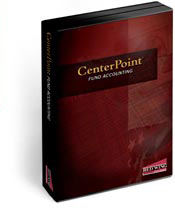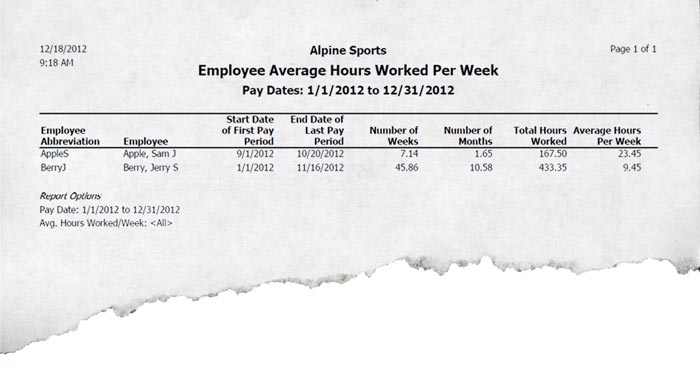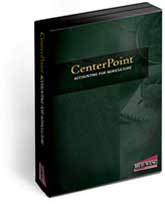By Stephanie Elsen

If you are in business, you know that it is important to understand how your business is performing. In order to do that, you need some way to keep track of and interpret the numbers that go along with your business. This is where accounting and financial management come into play. Accounting tools can be used to measure and interpret the financial progress of your business. They can also help you communicate the status of your business to important third parties, such as banks and the government. Here are some of the benefits of accounting and financial management.
No more guessing. By maintaining an accounting system, you can improve your odds of making the right decision for your business. While the information alone is not the only factor to consider, it does provide one very important piece of the puzzle in your decision making process. Good accounting records show you where you stand financially, so you won’t have to guess at what your financial position is.
Make better decisions. Accounting plays an important role by giving us a means of communicating the financial part of a business to others. The most crucial function of any accounting system is to provide real data, by which managers and owners can base their decisions. Having numerical facts greatly helps in making profitable decisions for your business. And while the accounting information gathered does not guarantee a good decision, it does greatly improve your chances of making the best decision possible.
Solve problems. Accounting systems provide reports that help you analyze the profitability and performance of your business. Not only can an accounting system help you make decisions, but it can also help you find areas of your business that need to be improved. Once you are able to identify trouble areas, you can focus on improving them.
Track complex information. If your business requires any loans, the lending institution will likely require financial reports to understand the net income and net worth of your business. They may also want to evaluate your financial statements periodically to monitor your ability to repay the loan. Providing this kind of information is next to impossible without business accounting software that can provide financial statements.
Good accounting records show where your business stands financially. Use every advantage available to your business to improve and enhance its performance. Implement and maintain your accounting and financial management system, and your business will be on its way to financial success!

By Stephanie Elsen
Are you looking for a better way to handle the accounting for your nonprofit organization? There are so many accounting software products available and it can be hard to decide which one is right for you. In case you are wondering if CenterPoint Accounting for Nonprofits will be a good fit, here are some statistics about the nonprofits who look to Red Wing Software for their nonprofit accounting.
- About 48% need fund accounting and nonprofit specific features. When you are trying to manage different funds, it can be hard to do that in a basic accounting system that was made for small businesses. Most nonprofits who make a move to CenterPoint Accounting for Nonprofits have tried to make that kind of system work for their needs, but find that it would be far easier to use a system made for that purpose.
- 22% are outgrowing their basic software. Nonprofits that have grown over the years often move to Red Wing Software to accommodate a growing organization, more users, more data, and more! When a system gets bogged down, can’t be networked or accommodate additional users, it’s time to move to something new.
- 17% are doing the accounting by hand. Saving money can be appealing, and starting out by doing the accounting for your organization by hand is common. As time goes by, you will know when you are at the point of needing a better way to handle the accounting. This is when many organizations turn to CenterPoint Accounting for Nonprofits.
- About 13% are new organizations. If a nonprofit organization knows at the start what they need to get the reports, budgeting, and financial management tools in a meaningful format, they start by using an accounting system that can handle those things. By starting out with CenterPoint Accounting for Nonprofits, you can use the system for many years, instead of looking for something better after only a brief period of time.
Red Wing Software and CenterPoint Accounting for Nonprofits have helped thousands of nonprofits manage their financial information. Contact us today to see how we can help you by calling 800-732-9464 or e-mailing info@redwingsoftware.com.
By Stephanie Elsen
Businesses in the U.S. know that the Patient Protection and Affordable Care Act (PPACA), also known as Obamacare, is making some big changes that affect businesses. Top of mind for many is the requirement that businesses with more than 50 full time employees must offer their full time employees health coverage. (Full time is considered 30 hours or more.) It is important then, that starting in 2014, employers can accurately determine which of their employees qualify as full time employees. And that’s why starting to track the right information in 2013 is a good idea.
So, who qualifies as a full time employee? In order to determine that, each employer chooses a time frame in which to determine full time eligibility, ranging from three months up to twelve months. Whatever length of time is used to determine full time eligibility is also the length of time which they must offer health care coverage. For example, if they are looking at a three month time frame to determine eligibility, then those who qualify must be offered the coverage for three months.
Some types of employers have a difficult job ahead of them in determining which employees are full time. In businesses where there are many part time employees, some of those employees may work enough hours to qualify as full time. Perhaps an employee works many extra hours one month, filling in often when others are sick or simply taking someone else’s hours for them. Will you know which employees are approaching full time eligibility? Are you ready for the 2014 reporting requirement?
Red Wing Software’s CenterPoint Payroll Software is now ready with a report to help users determine which employees are eligible, for whatever time frame is chosen. The report shows the employee name, the dates of the employee’s first and last pay period, number of weeks worked, number of months worked, the total hours worked, and then the average hours worked per week. This report is included standard within CenterPoint Payroll, so users will be able to view the report all throughout 2013 to monitor which employees are eligible. Once health care coverage becomes required in 2014, users will be prepared with a report to verify who is eligible. The report will be available in 2013.

Preview of the “Employee Average Hours Worked Per Week” Report
This post is by Bruce Senti of Aatrix State and Fed Payroll Reports
Compliance will be the BIG topic for 2013.
As the recent political environment has shown, the idea that tax policy will change little in 2013 is laughable. The federal government will continue to struggle with necessary change and no one knows exactly what direction tax code and legislation will go.
What we do know is that with the implementation of universal health care and ever-growing deficits, every taxing authority is likely to be impacted.
The most obvious outcome of such volatility is that change in rates, formats, forms, and filing requirements are a certainty. Keeping up with those changes and remaining in compliance will be an even more difficult task for payroll administrators than it has been in the past.
As states attempt to comply with new federal standards and respond to their own fiscal needs, it is more likely that there will be multiple changes during the next twelve months.
Forms will change to accommodate new taxes, changing rates, and increased limits as well as new calculations required for compliance. More and more businesses will be required to eFile as agencies seek to save money by eliminating paper forms.
What administrators can do to insure compliance.
In the past it would really boil down to two options: Businesses could hire additional staff to monitor the changes that affect their business or they could rely on compliance professionals that work for filing services or payroll services and outsource their process. These two options tend to be very expensive and eliminate the ability to control their own payroll start to finish.
In the last seven or more years, a new option has emerged as payroll software companies have partnered with payroll reporting software and eFiling services to take advantage of the compliance expertise inherent in those companies to assist their customers in meeting the changing environment.
A solution that is fully integrated into the payroll software is the best choice. It eliminates the need to transfer manual reports or transcribe info to a third party. It provides a familiar interface and improved accuracy as the actual paycheck data is used to produce the filing information.
Taking advantage of a company that deals with compliance every day is the safest way to insure your company is compliant. If your software has not partnered with an eFile and compliance service you may need to re-evaluate whether different software may be appropriate.

By Stephanie Elsen
Are you looking for something better to handle the financial information for your farm? You might be wondering if you came to the right place. During the search process, you probably noticed that there are many accounting software programs available. It can be hard to decide between them all. Here are some statistics about the people who choose Red Wing Software’s CenterPoint Accounting for Agriculture to handle their farm’s financial information.
- About 55% need agriculture-specific features or accounting features that work well for farms. By far, the number one reason people move to CenterPoint Accounting for Agriculture is that they want to enter and track information specific to how a farm operates. Functions such as production analysis, multiple quantity inventory tracking, and ag-specific ratio analysis (and much more) provide meaningful information, so it is easier to make profitable decisions for your farm.
- 27% are outgrowing their basic accounting software. Those who began by using a basic or “shelf” software program can find that as they grow, it can no longer handle their needs. Perhaps they need to manage more than one entity, or the number of transactions has become too large for their current system. In these situations and many more, CenterPoint is a great program to look at. It can handle the multiple entities, and there is no hard limit to the data that can be entered and stored.
- 18% are new farms. Farms and agricultural operations just starting up can definitely benefit from the accounting and financial tools offered in CenterPoint Accounting for Agriculture. Why not start with a program you know can grow as your operation grows, and can give you the information you need, in the way you need to see it. Staying on top of financial trends and knowing your profitability from the start can really help you grow!
Make the right decision for your farm. Red Wing Software and CenterPoint Accounting for Agriculture have helped thousands of farm accounting software users manage their financial information. Contact us today to see how we can help you by calling 800-732-9464 or e-mailing info@redwingsoftware.com.